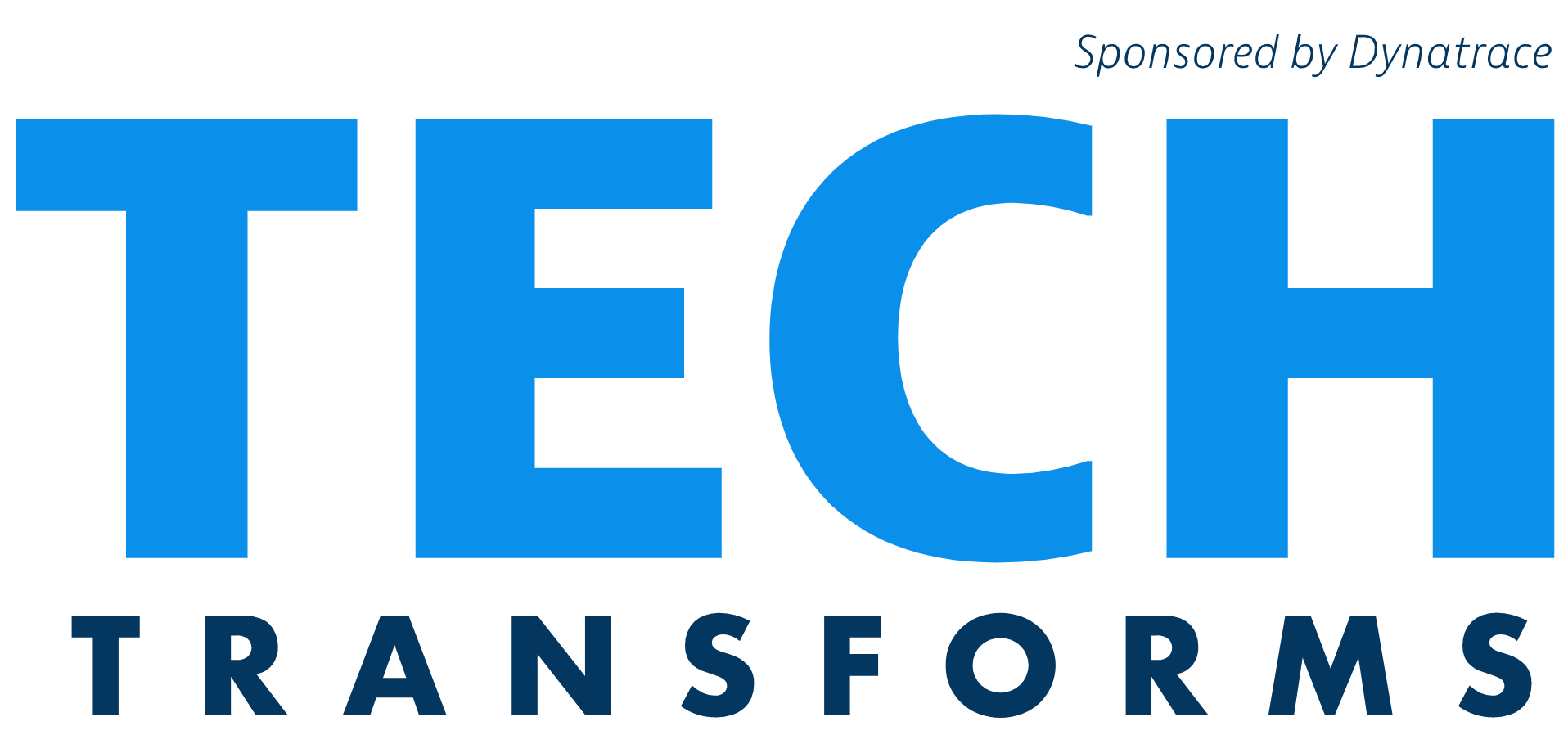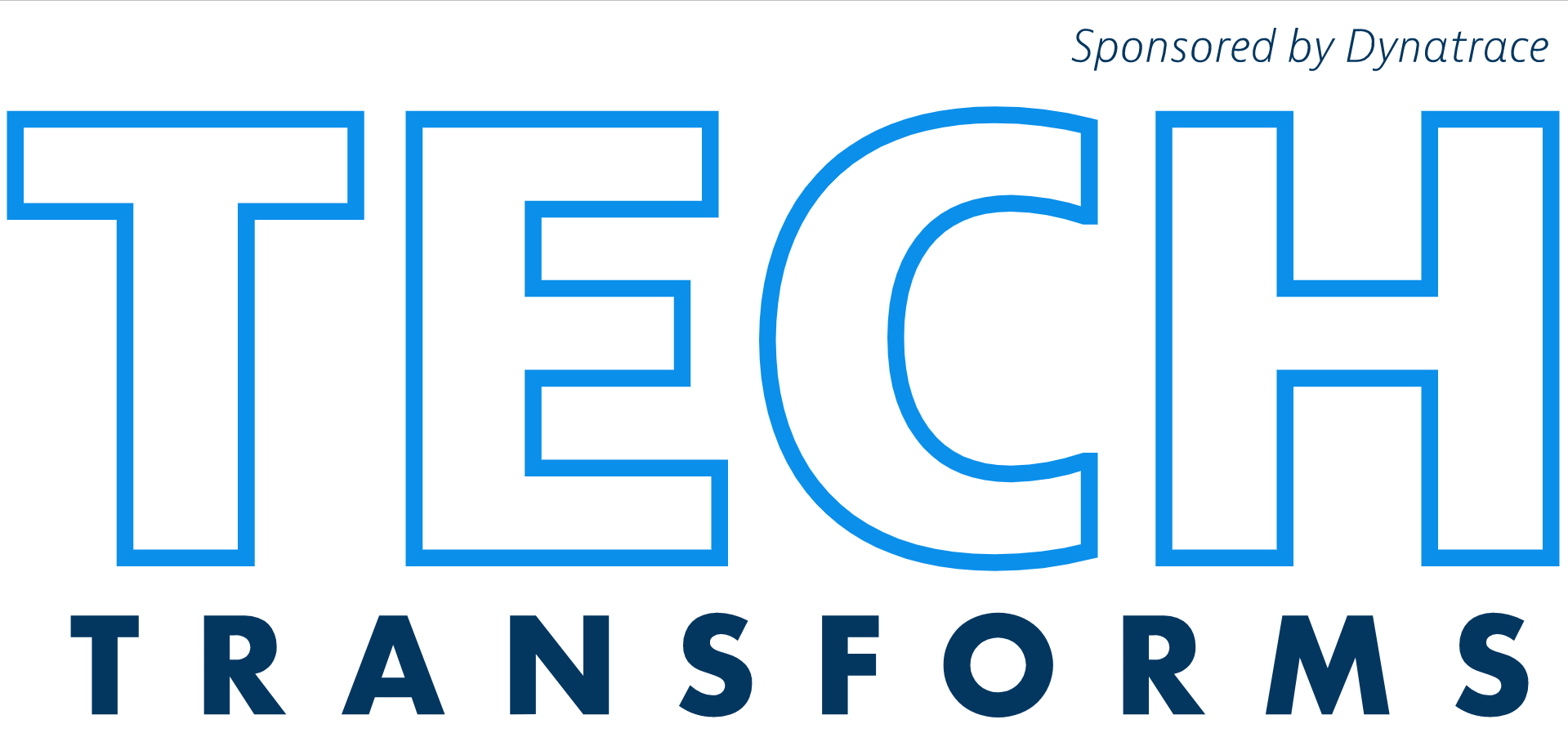Episode 10
What AI Is, and What it Is Not with Willie Hicks
AI capabilities range from providing on-the-ground safety for US soldiers, to removing the time delay of the Mars drone. But what misconceptions are there about Artificial Intelligence and Machine Learning? Join as Carolyn and Mark welcome Willie Hicks Public Sector CTO at Dynatrace on to debunk myths and confirm beliefs about the power of AI.
Episode Table of Contents
- [00:41] Willie Unpacks What AI Is
- [09:22] What AI Is in the Medical Field
- [16:44] When AI Starts to Become Practical
- [23:38] Staying in the Vein of What AI Is
Episode Links and Resources
Willie Unpacks What AI Is
Carolyn: Today, we get to talk to Willie Hicks, CTO of Dynatrace public sector, on the very hot topic of artificial intelligence. Willie is going to unpack what AI really is and isn't. Apparently, I will not be having an in home version of Star Trek's Data to do light chores anytime soon, spoiler alert. But we also get into the nuances of AI versus ML, how the government is developing and using AI.
Willie is going to tackle the recent National Security Commission on artificial intelligence final reports. He's going to share his biggest takeaways from the 800-page report. That's going to save us from actually having to read anything. Finally, we're going to discuss how he has seen the industry and the government partner in AI, the wins, the losses, and how we can do better.
I want to go straight to our topic of the day and just have you level set us on AI. Define what we're talking about here.
Willie: When I think about and talk to people about AI, often I get the question, "What is AI?" We can talk about it from the strict definition of AI, if you wanted me to rattle off the Oxford English dictionary version of it.
It is a theory in the development of computer systems that can perform tasks. These are normal tasks that humans would do, so it's artificial intelligence. But in reality, AI is more than that definition.
A Task-Oriented Type of AI
Willie: Most people have heard or directly experienced AI in one fashion or another, and they don't even realize it. Every time you call into Amazon or some company to chat about a product that didn't arrive, or you're calling to pay a bill, you'll get an automated chatbot or an automated service. A lot of times, it asks you to speak to it, in a natural language. It is processing that information and giving you back some type of feedback. That's a very task-oriented type AI that you're interacting with.
We actually interact with AI all the time, and that's growing day in and day out. If you've got devices, smart speakers in your home, you're interacting with a type of AI. Or if you are using a lot of systems today on computers that are trying to keep you from gaming the system, like they're getting a lot more complex. The CAPTCHAs and things like that are getting more complex to try to understand when other bots are trying to get into the system. All of these types of systems are some types of AI.
Now, we'll get into this later. There are different types of AI. There's what you were just talking about, Data. I would love to have Data in my house, or Jarvis. Not Skynet, but one of those AIs that has a more general purpose that doesn't exist. Those types of AI don't exist today, except in science fiction.
Carolyn: At all?
Willie: Not really, at least not that we know of. If they're in a secret lab somewhere, we don't know about it.
How People Misuse What AI Is
Mark: They probably do at Bill Gates' house. It seems like the use of the term AI is all over the place. Everybody uses it pretty ubiquitously, but it means so many different things based on the description that you just laid out. Literally, the spectrum is massive. But people use the term, it sounds like artificial intelligence to mean just about any of that.
Willie: Also, they misuse terms a lot of times too. Some people say machine learning is AI. A lot of sci-fi and a lot of what we see on TV has driven what people think about AI. But there is really more of a practical side of AI. The funny thing is AI is becoming really more ubiquitous. AI is being embedded in systems. There are manufacturers' chips that are really being designed to leverage AI at the edge.
The smart speaker is one way, but a lot of times, you'll interact with devices in buildings. You might not even realize it, but in the backend, AI is processing and understanding what that user is doing. How to respond back to the user, how to feed data and capture that data for marketing purposes, all other sorts of things. AI is really ubiquitous, but people kind of misunderstand what it really is.
Mark: Let's break this down into a practical sense. How are you seeing artificial intelligence being used? Let's just use this example, how do you see it being used in military agencies across the DOD? Then I'll just tack onto that on top of it. What role do you see the industry playing in that mission?
Two Parts of What AI Is
Willie: Two parts there. How do I see AI being used in the military?
Mark: Or DOD in general maybe.
Willie: DOD in general. It's funny because I was thinking about this recently for another talk. Most people, when they think of the military, they think warfare, rightly so. The military is really more about peacekeeping, hopefully. We don't want to go to war. But a lot of times, we are thinking about it from a war platform standpoint. So again, going back to sci-fi like Skynet kind of thing.
People have these fears that AI is going to take over military systems and all. But the military is actually using AI in a lot of different more practical applications. Things that you see in industry, business systems, data analytics, big data analytics. I'm not talking about just from a warfare standpoint, but the military is a massive organization.
Mark: Logistical stuff, yes.
Willie: Logistics. When you think about transport, you think about having to move thousands of people at a moment's notice, maybe overseas. You're transporting equipment, heavy equipment, and so forth. The maintenance of that equipment, all of these things take a lot of manpower to maintain. Or if you use AI, which the military is actually investing a lot of time and resources into figuring out how to better maintain their fleet, how to do predictive analytics on their fleet.
When do I need to change, instead of constant rotation of maintenance, having more smart systems. Decision systems helping them say, "You need to replace this part no based on X, Y and X." And systems are becoming more explainable for the military to understand. Okay, this is why I'm giving you this decision.
What AI Is in the Medical Field
Willie: Also, you'll see this in things like the medical field, battlefield medicine, also non-battle field, conventional medicine for our veterans in the VA. AI is being implemented in these places in a lot of different ways. A lot of cool things that may not be here today, but things that I have seen and read about and talked to others about. This is more futuristic.
But having drones that have AI built into them that could do dangerous tasks that you would have to use a person for in the past. Let's say you had a soldier in the field and you had to extract that soldier in the middle of combat. If you could send a drone out, or something that could actually go pull that soldier back without endangering another soldier.
Mark: I went to a dinner recently and was listening to the CIO of the Navy talk about this question. He brought up the example, it made me think of it because you were talking about drones. He said the thing that popped out in his mind was to remember the videos of the drone on Mars that we saw. I don't know what the gap in communication is between Earth to Mars. But he said it was nine or 19 minutes, or something like that. He said that they're using artificial intelligence to extrapolate out that gap, so a drone doesn't crash into the planet.
Carolyn: What does that mean, extrapolate out that gap?
Leverage GPS Mapping
Mark: Well, that was my interpretation, but to leverage GPS mapping and things like that. So if a drone is flying across the landscape to be able to see that there's objects coming. Or how to navigate terrain and things like that, or weather conditions and stuff like that.
Willie: And NASA, granted, we're talking about military applications. There’s a second part to your question.
Mark: The second part was how's the industry supporting that mission.
Willie: Let me get right back to that because that is actually a very interesting point and something that's fascinating. I've got two young kids and we always love to watch the science things from NASA and videos from NASA. They watch over and over again, that Mars landing. I don't know if people recognize and appreciate the engineering and the science that went into doing something like that. There is a physical limitation of how fast we can send a signal between Earth and Mars. There's the speed of light and you can only send the signal so fast.
If we were trying to remotely control that lander, but the time we sent, got the first signal back to the lander, it would've crashed into the planet. So to maneuver and land a probe like that, you have to do it automatically. Or it has to be AI-driven, it has to be a more computer-driven system. What's fascinating about that is that it was using multiple, different sensors. I don't know the exact number. But if you think about it, it has to be calculated from the moment of entry into the planet, its speed, its velocity, its position.
The Best Thing About What AI Is
Willie: It had to have cameras to see where it was going to land. This is the best thing too. Automatically, it could correct for itself in flight. It knew where it reached the point where it needed to deploy its heat shield, release it. Then, it lowers itself. It continues down until it gets to a point where it can start scanning the landscape. This is where AI really starts to come in because it has a map of where it wants to land, where humans want it to land. It can then start looking for, based on criteria, the best place for me to set it down.
Mark: Would you consider what pilots, 25 years ago, were using autopilot to land a very rudimentary or an early-stage artificial intelligence?
Willie: I don't even know if I would put it in the same vein as what the AI is doing today. In the early '80s, I used to have Simon, this little robot that you could program. It was cool. You could talk to it, you could program it. It would walk around, bring you a little drink or something. You couldn't call that AI, you programmed it to do something, but it was equivalent.
Carolyn: So back to NASA, how much of the industry is part of that AI engine that's making all of this work?
Willie: There is a lot of industry. First of all, I will say JPL. This is truly a partnership.
What AI Is in Places Like the Defense Research Agency
Willie: What I've learned over the years, especially working with NASA, places like JPL, working with the Navy, a lot of this technology that we're utilizing today, it starts as military projects a lot of times, or NASA driven. These are massive programs to get off the ground, to research, takes a lot of money. In the early days when the industry didn't truly see a revenue stream out of that or a benefit, they're not investing that kind of money. But the government is going to invest in that, especially if it's around national security and other topics.
So you'll see early on, AI being invested in by places like DARPA, the defense research agency. You'll see this in places like NASA and JPL. People also probably don't realize AI is not something that's new. People think about AI and they think about it in the last 10 years, five years, just because of how technology moves today. Things happen so quickly. Those advances, people are like, "AI's only probably been around five or 10 years." No.
Honestly, the rudimentary thoughts around AI go back to the 1800s, or 1830s. It was only probably until the 1950s that some practical applications could start being conceived. But having the technology to conceive some of these more practical applications, only in the last few years do we have the capability to really exploit AI. This has been a topic that's been around for a long time. Now the question around industry is that this gets started and gets funded and researched by education, by higher education, by some private sector, a lot by DARPA and JPL, and some of these government institutes.
When AI Starts to Become Practical
Willie: Then what will happen is, like you see today, AI starts to become really practical. There starts to be a lot of applications where it could help cut costs in business. It could help save resources, X, Y, and Z, a lot of practical applications. Then industry gets involved, and they really start funding and putting money into research and into development. Now we've taken that catalyst, that's been started often by the government. And now the industry is taking over and really taking it to the next level.
Then the interaction begins because now industry and government can really partner together. Government can help with a lot of the heavy research, and what they've done already. Industry can take what they've done and made practical applications. The industry's really good at taking and making practical applications, and making systems that can do very specific tasks. Those tasks and applications are usually things that the government needs.
Carolyn: The industry, typically, we think that they can iterate a lot faster. Partially because industry's not iterating on a fighter jet. So a fighter jet, you're not going to do 50, to Tracy Bannon's point, our guest from Mitre a few weeks ago. There's a reason that you're not deploying code 50 times a day to a fighter jet. But in the industry, we're not working on those things, necessarily. Although, sometimes.
Willie: Granted, you're not deploying to a fighter jet 50 times a day. But what the industry is doing is that with every iteration, with every advancement, we're making this process better. We are making it more stable. We're making these iterations not just faster, but each iteration becomes a little bit shorter, but also less error-prone.
Adversaries Constantly Attacking From Cyberspace
Willie: So over time, you will start to be able to, even in the military, because you see this today with sulfur factories and so forth. They're starting to embrace some of these ideas around agile development around being able to deploy faster. It's in our best interest. It becomes a national security consideration then because we have adversaries that are constantly attacking us from cyberspace. Constantly attacking us, not just from a military standpoint, but from our national infrastructure. And these aren't just state actors all the time. These are proxies that may be working for state actors.
So we have to be able to move as fast as a lot of those actors as well. Over time, you might not be deploying to, and you have no need to deploy to a fighter that many times. But I've heard of cases where you do have newer, more modern technology, even in fighters. You hear about containerization and having modular code. There are some subsystems that I would imagine have that type of capability. So they can quickly deploy and upgrade a system if they need to based on the threat.
Mark: You mentioned something in your answer right there that made me think of this. It made me think of machine learning. How do you delineate what people consider machine learning and artificial intelligence?
Willie: People will equate AI and ML. The short answer is they're not the same thing at all. Anybody who thinks that AI and ML aren't the same thing, that's a common misconception.
Carolyn: I thought that's how AI did its thing, through machine learning. Like it was another term to say it's what it was doing.
Machine Learning as a Sub-discipline of AI
Willie: Think of ML as a sub-discipline of AI. It's just one way you can do AI, as you might say. But ML is just a sub-discipline. It is not artificial intelligence itself. Think of AI as just much more of a general term or concept. That definition I gave earlier, it's just more generic high-level general term that talks about machines performing complex tasks. ML, machine learning is an aspect or a sub-discipline of AI. That's how you can conduct, machine learning is one way you can get to AI, as it were.
So that's really the difference, and if you think about it, there is machine learning. Generally with machine learning, you use different types of algorithms, different types of methods in different circumstances. Machine learning is good at certain types of tasks. It might not be so good at tasks that need to be, let's say tasks that are on data sets that are constantly changing. That are changing really fast, really rapidly, and you need to be able to respond to quickly.
Machine learning takes time. You know it takes a lot more time to learn the system, to learn the data sets. To also start to feed back good answers, good data from those data sets. Sometimes it takes interactions from humans to help augment what the machine learning algorithms are doing. So machine learning might be good for some applications, maybe not so good for others.
Carolyn: Does machine learning eventually lead to AI or not necessarily?
Willie: Yes, it would lead to more of a task-based type of AI. It would lead to a type of artificial intelligence. It’s a technique for getting to a type of artificial intelligence.
Staying in the Vein of What AI Is
Carolyn: Let's get to our tech talk questions.
Mark: Willie, what do you think the next big leap in tech's going to be?
Willie: If we can stay in the vein of AI, I don't know when it's going to happen, but there’s one big leap that I'm waiting for that I'm looking towards. This is getting more nerdy, but I was just reading about this lately, quantum computing. I think that there is investment in that now. That is a very technical discussion, I don't understand half of it, but let's just put it this way. If we are able to really take advantage of just quantum computing, think about quantum computing as using the most fundamental parts of our universe.
Getting down past the atom, getting down to a very rudimentary part of the fabric of this universe. If you start looking at what are called quantum states, there is this idea that something can be in multiple positions. I could be in multiple places at one time. Sounds counterintuitive, but it can be in something called superposition.
And so what my understanding is, you can have this idea of superposition. Basically, until you observe it, it doesn't make a decision on what it's going to be until it's observed. You can use this and there's a lot of math and science behind it that I don't even pretend to understand. But you can use that to




